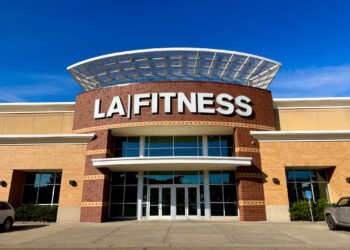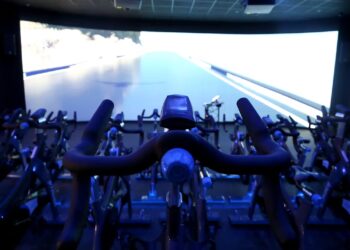Recovery can play a crucial role in a club’s success. Providing cutting-edge recovery offerings for members after their workouts is a great way to enhance their experiences by making them feel good before they even leave your facility.
Below, Allison Flatley, the CEO of Allison Flatley Consulting, LLC, shares her insight on what’s trending in club recovery offerings and how clubs can best capitalize on these trends:
What recovery offerings have you been seeing most often in the industry?
AF: I have seen clubs adding foam rolling, stretching and meditation classes to their group exercise schedules as a recovery solution. I am also seeing personal trainers use TheraGun, Hyperice, MyoBuddy and other hands-on devices at the end of their personal training session or selling it as an additional add-on session of recovery. Some clubs are rebranding their smoothie bar as a recovery station, emphasizing nutrition as a solution to recovery.
On the fitness floor, clubs are creating larger stretching or recovery spaces. These areas have more than just traditional matting. Now, clubs are including stretching machines and vibration plates.
Based upon member demographics, some clubs have begun to offer cryotherapy, floatation pods, infrared saunas, relaxation pods, barometric pressure systems, LED light therapy and electromagnetic therapy as add-on amenities.
The most prevalent recovery solution is HydroMassage. All clubs, low cost and high-end, are adding HydroMassage Zones, and members are using them as a post-workout relaxation and rejuvenation station. I believe HydroMassage is leading the way with recovery because it is a 24/7, on-demand massage, requires no personnel, members love it and most importantly, it is a social activity. A husband and wife or two friends can get a massage together as they exit the club.
What do clubs need to know about these recovery offerings?
AF: Consumers are hearing about wellness, self-care and recovery. I believe adding recovery to a club will expand your reach into your community. Clubs need to understand fitness and exercise has traditionally only attracted 20 percent of the population. Approximately 100 million American have chronic pain, and 80 percent of Americans will experience low back pain at some point in their life. Clubs should capitalize on this important reality: Everyone needs recovery. Regularly, I hear from club operators that members come into the club just for recovery services and skip the workout.
How can clubs capitalize on this trend?
AF: Clubs can offer recovery services and solutions as a club amenity, a way to create a premium membership or add-on service. Once services are implemented, recovery can also serve as a member reward or retention tool. For example, if a client completes a personal training session, the trainer can reward a client with a post-recovery service.
Clubs need to look closely at their value proposition, unique differentiator and their strategy. Today’s buyers want value. Including recovery services and solutions into your club’s strategy can increase value, and separate you from your competitors. Our club members and consumers are purchasing these services elsewhere — why not bring them under the club’s roof and expand the club’s reach?
Stay ahead in the fitness industry with exclusive updates!
Bobby is the former assistant editor of Club Solutions Magazine.










